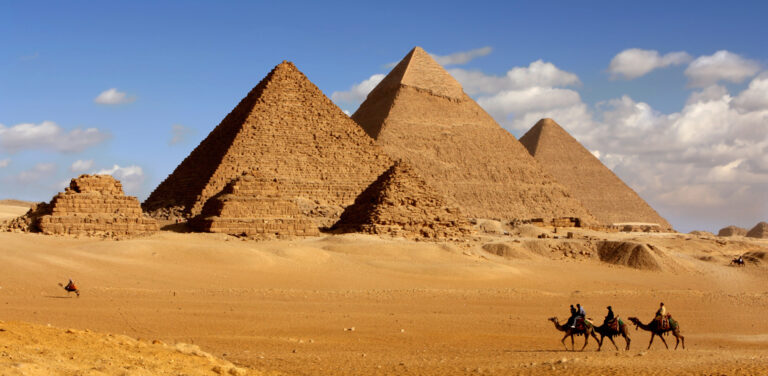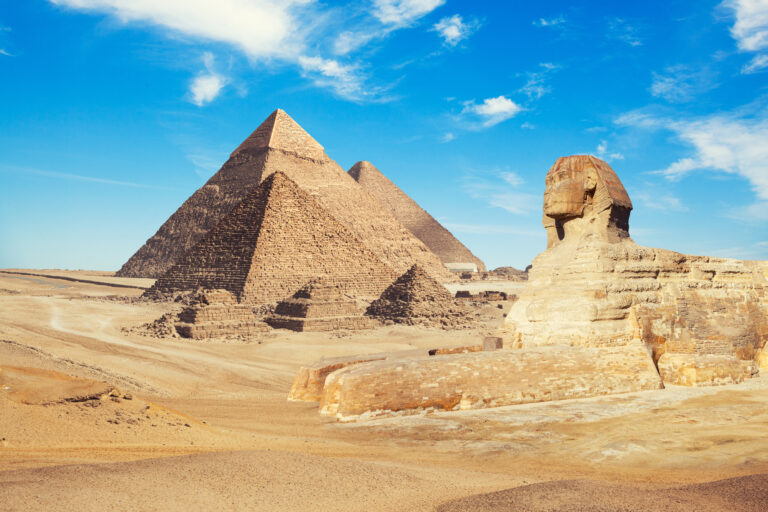What would you think if I told you the existence of a time machine and if you step into it transports you a couple of thousand years back, dating during the reign of powerful pharaohs while the Nile has ancient civilizations secrets to tell. You have now entered Elephantine Island which is not only a beautiful island nestled in the heart of Nile but also houses the one of a kind Aswan Museum in Egypt.
Do you travel a lot? Are you curious when it comes to Egypt’s ancient relics? Maybe you want to dig deep into Nubain culture and heritage? If yes, then this specific trip is tailored just for you. The Aswan Museum is an addition to the already impressive list of them centres in Egypt boasting their history bent towards archeology, is special. Unlike other museums, theInstead, museum serves as a true space-time continuum for anyone willing to explore it’s outstanding domes. Are you ready to unlock the secrets of the historical pearls of Egypt?Let us delve into the understated magnificence.
What can we tell you about Elephantine Island?
In the heart of scorching Egypt, lay a promising settlement, indeed a promising settlement Southern Egypt unlocks the doors to ancient Egypt culture. Aswan city is known as the cradle of Egypt’s southern cultures capital and its wealth of religion and trade is what boosts the economy of this beautiful city. This also makes it a hot spot for tourists, both nationally and internationally. The Island is around 1200 meters long and is precisely at the center of the “Nile scottish”. Did you know Island has two nicknames? The first tailor made from the Islands structure while the second proved to be interesting due to commercial purposes. Today, the island is dotted with ruins, temples, and museums that tell the story of a community that thrived for thousands of years along the banks of the Nile
The Story Behind the Aswan Museum
Built in 1912 by British Egyptologist Cecil Mallaby Firth, the Aswan Museum in Egypt was originally designed to house artifacts uncovered during the excavation of Elephantine Island. Over time, it transformed into one of the most distinctive Nile River museums, blending indoor displays with outdoor ruins. Unlike traditional museums, here you can step out of a gallery and find yourself standing amidst temples or gazing at the Nile’s serene waters. The museum doesn’t just house relics, it breathes life into them by keeping them in their original context, letting visitors imagine the island as it was thousands of years ago.
The Aswan Museum Story
In relation to the Aswan Museum, it was first built to store the awe inspiring artifacts uncovered on the Elephantine Island of Egypt . These artifacts were found by a British Archeologist by the name of Cecil M. Firth during his excavations of the island in the year 1912. The Aswan Museum has evolved remarkably into one of the most distinctive Nile River museums, breaking traditional boundaries by integrating indoor exhibits with outdoor ruins.
While most traditional museums only focus on displaying relics in glass cages, Aswan Museum allows one to literally step outside an indoor gallery into the midst of various temples and even marvel at the tranquil waters of the Nile. The breathtaking views and the historical setting of the relics ignite visitors’ imaginations, transporting them thousands of years into the past.
Shifting through the History of the Elephantine Island
Elephantine Island dates back to the Early Dynastic Period and has witnessed Egypt evolve for hundreds of years. Historians identify the western part of the island as a spiritual and financial hub during the Greco-Roman era. Thanks to its strategic location, Elephantine Island served as a vital trading center that strengthened Egypt’s economic ties with Nubia. The Island served for religious purposes as well, with temples devoted to Khnum, Satet, and Anuket . As part of the driver behind the economic growth, some of the oldest administrative records discovered here include Egyptian calendars, further affirming the importance of the island.
The Nubian Heritage Exhibit of the Museum
Another core attribute of the Aswan Museum is to note the emphasis placed on Nubian heritage. The region which is to the South of Egypt also forms an integral part of the ancient Egyptian empire. The culture of the Nubian people and their traditions are showcased with exhibits of crafts such as clothing, jewelry, musical instruments and even crafts. There is even a partition explaining how the construction of the Aswan High Dam affected Nubian communities by displacing a lot of people from their homeland. This section of the museum depicts life in the era of construction, so it is rich in human history, blending the pomp of Egypt with the humanity of its people.
The Magic of the Nile: Riverfront Views and Beyond
Scenery is one of the most crucial aspects when visiting Elephantine Island and it is certainly breathtaking. The island is hugged by the Nile River and it is in close proximity to the border which makes the view very tranquil. Thanks to the museum’s architectural design, it is possible to view the Nile while going through the museum’s exhibits. The view is composed of palm trees gently moving with the wind, sailing by lucas and soaring birds. These sights transform the experience from just touring a museum into actually grasping the essence of what allowed people to flourish in ancient civilization. You’ll understand why the Nile was seen not just as a river, but as a divine life force.
Satet Temple Ruins – Must See
The State Temple ruins are located next to the Satet Temple museum, which happens to be one of the ancient temples located on the island. Builders constructed the initial Satet Temple during the Early Dynastic period to honor the goddess Satet. Ancient Egyptians revered Satet for her power over fertility and the annual inundation—or flooding—of the Nile, which greatly boosted agriculture. Although time has caused some decay, visitors can still see the outlines of walls, altars, and fascinating inscriptions. Moreover, the position of the temple close to the Nile hints that it was crucial to ancient ceremonies. These types of temple ruins when walked through are a glimpse of places of reverence that seemingly continues to radiate power and spiritually.
Deciphering the Nilometer on Elephantine Island
The Nilometer located on Elephantine Island stands as a testament to the mysterious water ingenuity of the Nile observing structure used by ancient Egyptians. The purpose of this device is to measure the water level of the Nile river. Why would measuring the water level of the Nile be useful? as the water level determined the annual flood and the submerging of agricultural land controlling farmland productivity. These stone structures bear boundaries of a staircase leading down into the Nile showcasing stiff inscriptions devoted to precise water level of the Nile. Specifically, these observant measures were used by priests and seasoned courtiers to determine the fertility of land and the taxation revenue bestowed that year. These measurements helped priests and officials predict crop yields and set tax rates. Standing beside the Nilometer, you’ll gain a whole new appreciation for how connected ancient Egyptians were to their environment.
What Makes This Museum Different From Other Museums Along The Nile River
One of the more commercialized museums around the Nile river is the Aswan Museum which seems quite popular among tourists. Among the many features of the museum, the most appealing part is that it’s extremely close to the place where it’s situated. This Is quite eye-catching because the visitors can have an upperhand on viewing mysteries and towers of ancient civilization right in front of their eyes. The history of the island of Elephantine, the rich archeological heritage of Nubia and well presented exhibits combine to give a tourist holistic view of the region. Distinct from the rather commercialized museums around the world, this museum is more of a family oriented museum. You can feel the bold and robust nature of the ancients and their natural beauty resonates deep inside one’s body.
How to Reach Elephantine Island
Aswan city is my favorite places in Egypt. The Corniche in Aswan is the place to book a motorboat or Felucca for a sail. It’s a dream spot for sailing enthusiasts. The 10-15 minute ride offers breathtaking views of palm trees, desert hills, and other parts of Egypt. This island is car-free, giving you the freedom to wander and relax at your own pace. Boatmen often share fascinating stories about the places they visit, adding a touch of mystery.
Tips from an Aswan Travel Guide
Planning your visit to Elephantine Island and the Aswan Museum? Here are some expert tips:
- Time Your Visit: Go in the early morning to avoid heat and crowds.
- Stay Hydrated: The sun can be intense, so carry water.
- Footwear: Wear comfortable walking shoes suitable for sandy paths and uneven terrain.
- Local Guide: Hire a certified guide they offer invaluable insights you won’t find on placards.
- Combine Your Trip: Visit nearby attractions like the Nubian Museum or take a felucca ride at sunset for a full cultural experience.
The Best Time to Go
The best time to visit Aswan and Elephantine Island is from October to April. During these months, the weather is cooler and ideal for sightseeing. You can explore the museum, walk among the ruins, and enjoy boat rides without the exhausting summer heat. If you love photography, visit early in the morning or late in the afternoon. You’ll get the best lighting and fewer crowds.
Conclusion & Final Thoughts
The Aswan Museum on Elephantine Island actively preserves the essence of ancient times, like a living archive or photo album. Whether you admire Ancient Egyptian artifacts, feel captivated by Nubian architecture and relics, or find peace in the rhythm of the Nile, this island leaves a remarkable impression. It is not a visit; it is flying through the roots of civilization. Make sure that this beauty doesn’t escape you the next time you are in Egypt because history is not only in books; it’s still waiting silently on the banks of the Nile.
Frequently Asked Questions (FAQs)
Why is the Aswan Museum on Elephantine Island one of a kind?
The Aswan Museum is unique because of its location on Elephantine Island. The island is surrounded by ancient sites and the Nile River. This museum does not follow the usual approach. It combines indoor exhibitions with outdoor archaeological sites. This allows visitors to fully immerse themselves in the island’s history. Displays of ancient Nubian and Egyptian artefacts, heritages, and temples are within reach. It’s like being transported to Epic’s Egypt.
How do I reach Elephantine Island from Aswan?
Reaching the island is straightforward and fun. Travel by motorboat or traditional felucca and enjoy a short cruise on the Nile, which lasts for 10-15 minutes. The view while traveling is breathtaking. For ease and comfort, contact Nileholiday Best Travel Agent. They can organize transportation, qualified guides, and full-day trips to the island.
What are the must-see attractions on Elephantine Island?
Some of the most popular attractions on the island include:
- Aswan Museum of Egypt.
- Sculptures located at the Satet Temple.
- Nile’s Nilometer and the Old Egyptian Water Mark.
- Those actively excavated Archeological Zones in Aswan.
- Nubian Heritage preserved in reconstructed Nubian houses.
All these highlights can be explored in a single trip having various historical, cultural and natural insights.
When is the ideal time for an excursion to Elephantine Island and the Aswan Museum?
October to April is the best time for touring. Sightseeing is easier when temperatures are mild. That is, this period helps avoid the extreme summer heat and aids in outdoor activities. For ease of travel and for having a well-structured trip, you may contact Nileholiday Best Travel Agent. Who offers tailored travel arrangements based on the seasonal bests.
Can I include Elephantine Island in a full Aswan travel guide itinerary?
Certainly! Elephantine Island is a must-visit on any Aswan travel guide. It goes well with other attractions like the Nubian Museum, Philae Temple, and the Unfinished Obelisk. With the Nile Holiday Best Travel Agent, you can enjoy a personalized tour. It features the best cultural spots, museums, and even a sunset felucca cruise all in one trip.





